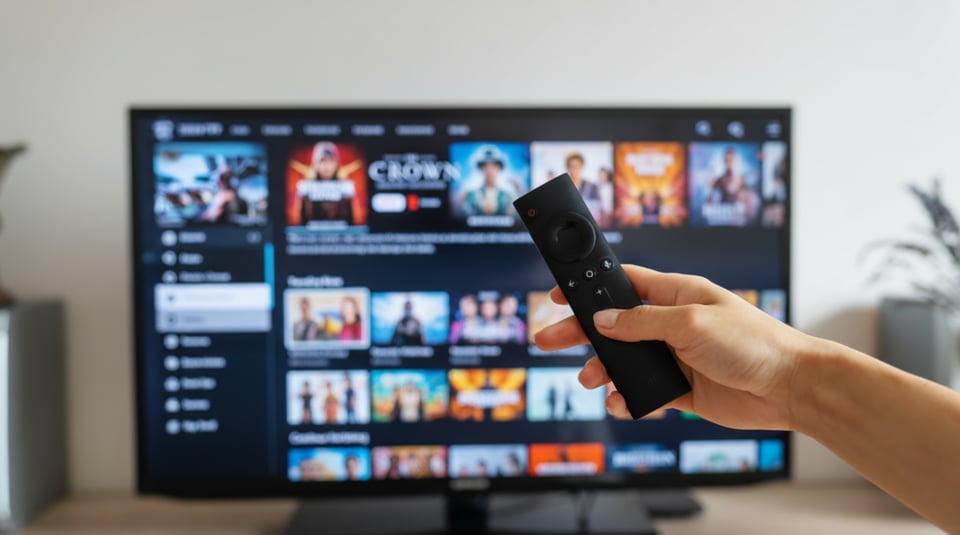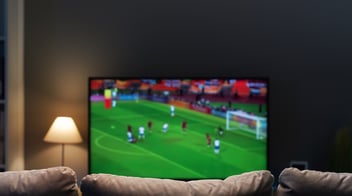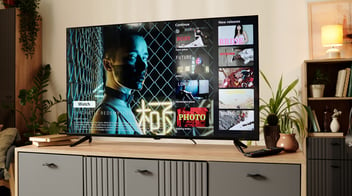Why Smart TV Application Development Takes a New Mindset
April 1, 2024 • launch ott platform, Smart TV, smart tv app development

Krishna Kumar
Director of Engineering- OTT apps
You have built for the web.
Then came mobile application development, and you aced it.
Now, the industry is talking about Smart TV applications. Are you ready to deliver at the same pace and scale?
While the principles of application development don’t change with each platform, Smart TV application development still necessitates addressing the perennially unfulfilled promise of cord-cutting for cost savings. It is difficult to think about Smart TVs without addressing the classically broken promise, ‘Cut the cord and you will surely save some money!’ The natural cycle of bundling and unbundling, especially within entertainment, has resulted in mixed financial reward for many of us. Ditching your cable service to rely on streaming subscriptions may not yet be your best bet, but regardless of your personal entertainment needs, digital product managers should be taking notice of this emerging ecosystem.
But what does it take to build for the new age Smart TV ecosystem?
A new mindset
Smart TVs are a distinctively positioned communal device. Where else would you encounter a recommendation for your child's preferred cartoon alongside the next episode of your favorite murder thriller? Given the highly immersive experience offered by larger screens, TVs have evolved into interactive billboards conveniently situated at the core of many households.
Offering value and engaging users on an immersive shared device like the TV and holding their attention can swiftly extend into heightened personal engagement with content on mobile and web platforms.
But achieving this seamlessly requires product managers, designers, and developers to transition from the mobile-first mindset to the TV ecosystem. And that’s a significant paradigm shift which requires a new mindset and a brand new action plan.
The action plan to build for Smart TVs
Effectively navigating the shift from mobile development to smart TV involves deeply understanding the fundamental differences between these platforms and the users you are tasked to engage on them.
Smart TV vs mobile development: market research
User Preferences: Understand the preferences and behaviors of users on TV platforms. This may involve market research, user interviews, and studying analytics to adapt your product strategy.
Smart TV vs mobile development: platform differences
Smart TV Operating Systems and Devices: Unlike traditional TV, the smart TV ecosystem is much more diverse. For example, Samsung TV comes with Tizen OS, LG TV brings Web OS. In addition, devices and operating systems span differently across Vizio TV, Android TV, Apple TV, Fire TV, Roku among other smart and connected TVs. Building applications for these diverse devices requires different skill sets, and can be more complex. Delivering consistent viewer experience across this diverse ecosystem of devices and OS can be even more challenging and requires extreme care and optimization of UI and UX.
Screen Size and Resolution: TVs typically have larger screens with different resolutions compared to mobile devices. Ensure that your product's UI/UX is optimized for a larger display while maintaining clarity and readability.
Input Methods: Unlike touchscreens on mobile devices, TVs are typically controlled using remote controls, many of which are also voice enabled. Design your user interface to be navigable with directional buttons or voice commands. It is important to recognize that each TV platform defines baseline expectations for how their remotes are to be used. If you are planning on distributing your product across multiple operating systems, your design will need to be flexible enough to adapt to these differing interaction requirements. Work to become intimately familiar with these expectations so that you can meet both the needs of your users while conforming to the expectations put forth by the operating systems.
Smart TV vs mobile development: user behavior & context
Lean-back Experience: TV usage is often more of a "lean-back" experience, where users are sitting back and engaging with content in a more relaxed manner. Consider adapting your product to suit this context, providing content that is suitable for longer viewing sessions.
Shared Experience: TVs are often used in a shared environment, so take into account features that enhance group or family interaction. This could include multiplayer games, collaborative content consumption, or personalized profiles for multiple users.
Smart TV vs mobile development: content consumption
Optimized Content: Tailor your content to suit the TV format. This may involve adjusting the aspect ratio, optimizing video quality for larger screens, and ensuring that graphics and text are legible from a distance.
Integration with Broadcast and Streaming Services: Consider integrating your product with popular TV services or streaming platforms to enhance content availability and reach a wider audience.
Smart TV vs mobile development: technical considerations
Performance Optimization: TVs may have different hardware capabilities than mobile devices. Optimize your product for smooth performance on TV platforms, considering factors like processing power and memory constraints.
App Distribution: Understand the app distribution channels for TVs, such as smart TV app stores, and ensure that your product is easily discoverable and installable on these platforms.
Focus on High-Quality Imagery: Given the larger screens on TVs, prioritize high-quality imagery to enhance the visual appeal. Optimize graphics and videos for TV resolutions to ensure a crisp and clear viewing experience.
Consistent Branding Across Platforms: Maintain consistent branding across different platforms, including mobile and TV. While adapting to the TV context, ensure that the overall brand identity remains cohesive to provide a seamless user experience.
Accessibility Considerations: Prioritize accessibility in your TV designs. Consider factors such as font size, color contrast, and readability from a distance. Test your designs with a focus on inclusivity.
Smart TV vs mobile development: testing & quality assurance
Device Fragmentation: TVs come in various brands and models, each with its own specifications. Test your product on a range of TV devices to ensure compatibility and a consistent user experience.
Remote Control Testing: Test your product thoroughly with TV remote controls to ensure ease of navigation and a seamless user experience.
Smart TV vs mobile development: Regulatory & compliance
Compliance Standards: Be aware of any specific regulatory or compliance standards related to TV platforms. Ensure that your product adheres to these standards for a smooth launch and ongoing operation.
Wrapping up
By incorporating these tips and maintaining a user-centric approach, you can successfully transition your product design skills from web and mobile to TV platforms.
Keep iterating and refining your designs based on user feedback and the unique characteristics of TV interfaces to prepare yourself for the next generation of content consumption devices - good old television!
Why ViewLift
ViewLift offers developers a simple way to out maneuver the complexity associated with Smart TV development. An example is LIV Golf’s varied smart TV application ecosystem built from scratch across LG, Samsung, Vizio, Roku, FireTV, Apple TV, among others. To simplify your journey of smart TV application development, get in touch today.
SHARE THIS POST
What to read next
The Best VOD Platform Providers: Features, Cost, Monetization
The global entertainment industry has been grappling with constant disruption over the past decade....
How to Develop an Android TV App in 2023
Unlock the secrets to developing exceptional Android TV apps and transform your smart TV experience...
Smart TV App Launching Guide for DTC Platforms
Smart TV apps have become increasingly popular in the last few years, owing to a growing trend of...


